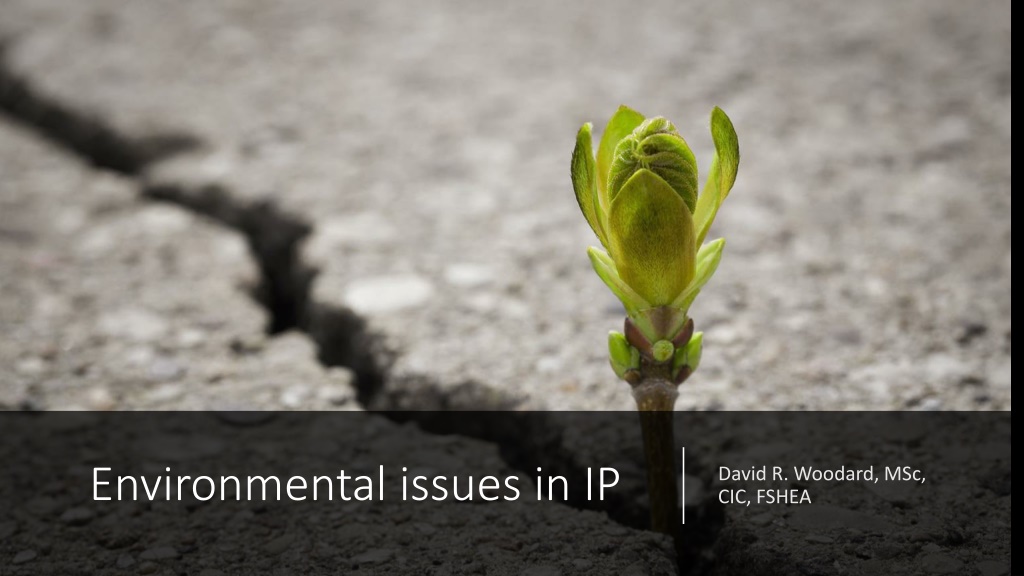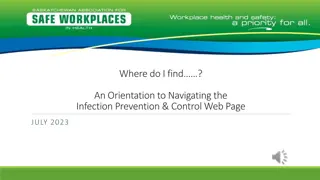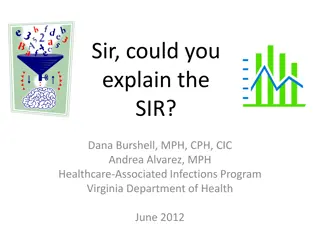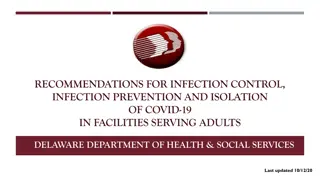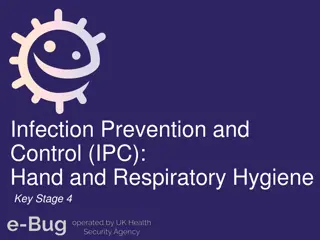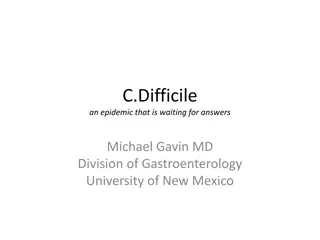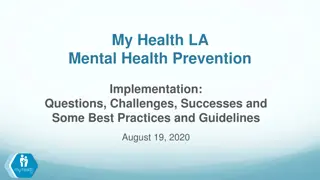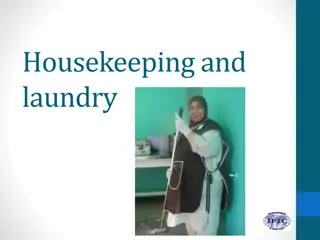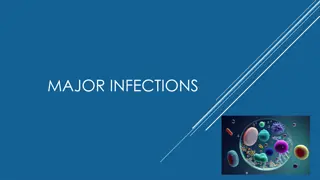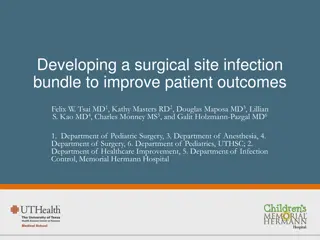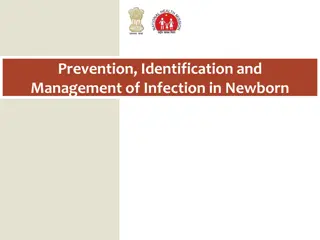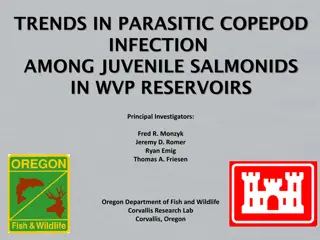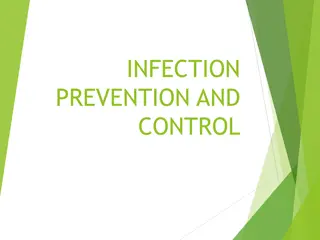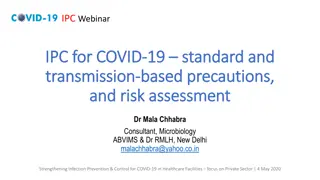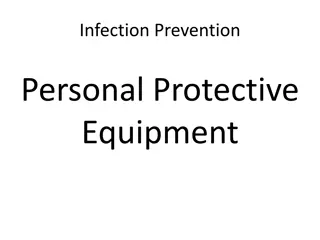Environmental Issues in Infection Prevention: Addressing Challenges and Best Practices
Addressing environmental issues in infection prevention is crucial for maintaining a safe healthcare facility. The challenges include room cleaning during hospitalization, disinfection post-discharge/transfer, time constraints, cost containment, ongoing education, competency assessment, and outcome measurement. Trusted sources such as CDC guidelines, APIC text, AHRQ updates, AORN, and regulatory frameworks like CMS, 42 CFR 482 highlight the importance of proper cleaning protocols. Key focus areas involve privacy curtains, patient care equipment cleaning, schedule, isolation rooms, EVS policies, disinfectant use, laundry procedures, spill management, and facility maintenance. Effective use of bleach, green agents, proper concentrations, dilutions, and measurement methods are critical. Facilities must define cleaning standards, create cleaning plans, collaborate with infection prevention, conduct gap analysis, and follow evidence-based practices. Meticulous cleaning with approved products and strict adherence to EPA guidelines are essential for infection control.
Download Presentation

Please find below an Image/Link to download the presentation.
The content on the website is provided AS IS for your information and personal use only. It may not be sold, licensed, or shared on other websites without obtaining consent from the author. Download presentation by click this link. If you encounter any issues during the download, it is possible that the publisher has removed the file from their server.
E N D
Presentation Transcript
Environmental issues in IP David R. Woodard, MSc, CIC, FSHEA
Issues and concerns oThe problems oRoom cleaning during hospitalization is a problem oRoom cleaning and disinfection after discharge/transfer is a problem oTime is of the essence oCost must be contained oEducation must be current oCompetency must be measured oOutcomes must be measured
Sources of truth CDC Guidelines for Environmental Infection Control in Health-Care Facilities APIC text 4 chapters AHRQ 6/6/2003 with updates Association for Healthcare Environment AORN
CMS the issues are embedded in the 42 CFR 482 TJC there is no chapter, scored as Infection Prevention Who is responsible DNV there is no chapter, scored as Infection Prevention State statutes do not assign responsibility, just the requirements
Privacy curtains Cleaning of Patient Care equipment Schedule Isolation rooms Expectations and targets in survey EVS policies and Procedures Use of wipes and disinfectants Laundry procedures Blood Spills Facilities (HVAC, Refrigeration, Ice Machines, Sinks, aerators, eye wash)
Role of bleach Contact (wet, dwell) time Green agents Concentrations Dilutions (10%) How to measure Issues and concerns at the first step Bleach wipes vs. bleach solution times Quaternary ammonium and water quality Microfiber cloths/mops Mix and measure accurately
How does the facility define cleaning Different Standards for Different Areas Facility cleaning plan Collaborative process with IP IP approval of products Gap analysis Evidence based
Meticulous cleaning of environment Use of best possible, safest product available Use products approved for project Expectations EPA list N Train staff to do the job Do not replicate experiments Read and understand the hype
Team EVS leader(s) IP Risk assessment for EVS Assessment Zones by risk based on worker and environmental conditions Highest risk patient care areas and high touch surfaces Medium risk adjacent areas (nursing stations) indirect patient contact Low risk administrative areas, public areas
Processes to select disinfectants for hospital (ICRA) As with all ICRA, give each item a score (1-10), add them up for all products, Highest score wins! Considerations Questions Value Kill claim Does it kill what you need killed Kill time How long does it take to meet kill claim Safety What are the hazards to the user, the environment, toxicity Rutual APIC conference 2014 Ease of use Storage, dispensing, disposal, one step , odor Others Costs, compatibility, add ons
Low level disinfection Low-level disinfection issues Cleaning apparatus not adequately cleaned and disinfected water-disinfectant mixture is not changed regularly (e.g., after every three to four rooms, at no longer than 60-minute intervals) Cleaning of the apparatus (not disinfecting!) Single-use disposable towels impregnated with a disinfectant
A process to approve all disinfectant & antiseptics EVS Purchasing User (RT, Wound care) Disinfectants/antiseptics approval All disinfectants must have a EPA approval The approval for the product is available on the EPA website https://www.epa.gov/pesticide- registration/selected-epa-registered-disinfectants
Number and location of organisms Resistance of organisms to cleaning products Concentration of disinfectants Time dependent function Efficacy Physical and Chemical Temperature pH Water hardness Organic and inorganic matter Biofilms
Types of disinfectants Phenolic gold standard Smells like a hospital Toxicity Won t kill spores Quaternary ammonium Specific pathogen approvals (read the label!) Affected by water hardness Affected by bioburden
Cleaning and disinfecting the environment
Issues with terminology Why terminal room cleaning is important Why are we doing this again? Conventional vs. enhanced environmental cleaning monitoring Where are we going with surface disinfectants and new technologies?
Disinfection cleaningImplies the use of a low level disinfectant to decrease bio-burden Types of cleaning Environmental cleaning (in Healthcare) surface cleaning to reduce bio-burden Hygienic cleaning New, more specific term surface cleaning to reduce bio- burden (confusion with hand hygiene?)
How clean is the environments Visually clean surfaces maybe contaminated 82% of sites visually clean 24% clean by ATP bioluminescence 30$ clean by microbiological techniques Some clean surfaces had organism counts >40 CFU/cm^2
Cleaning of Patient Care equipment Privacy curtains Schedule Isolation rooms EVS policies and Procedures Use of wipes and disinfectants Laundry procedures Blood Spills Facilities (HVAC, Refrigeration, Ice Machines, Sinks, aerators, eye wash) Regulator expectations
